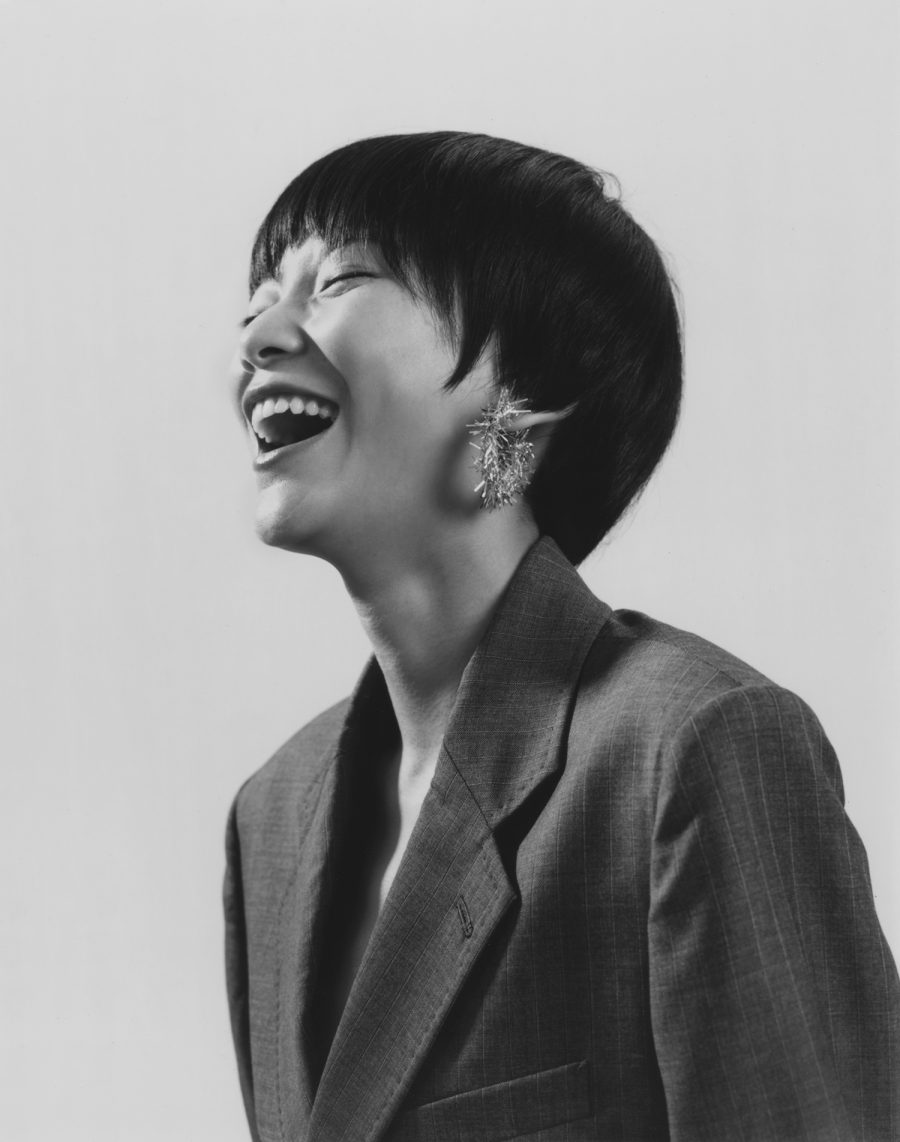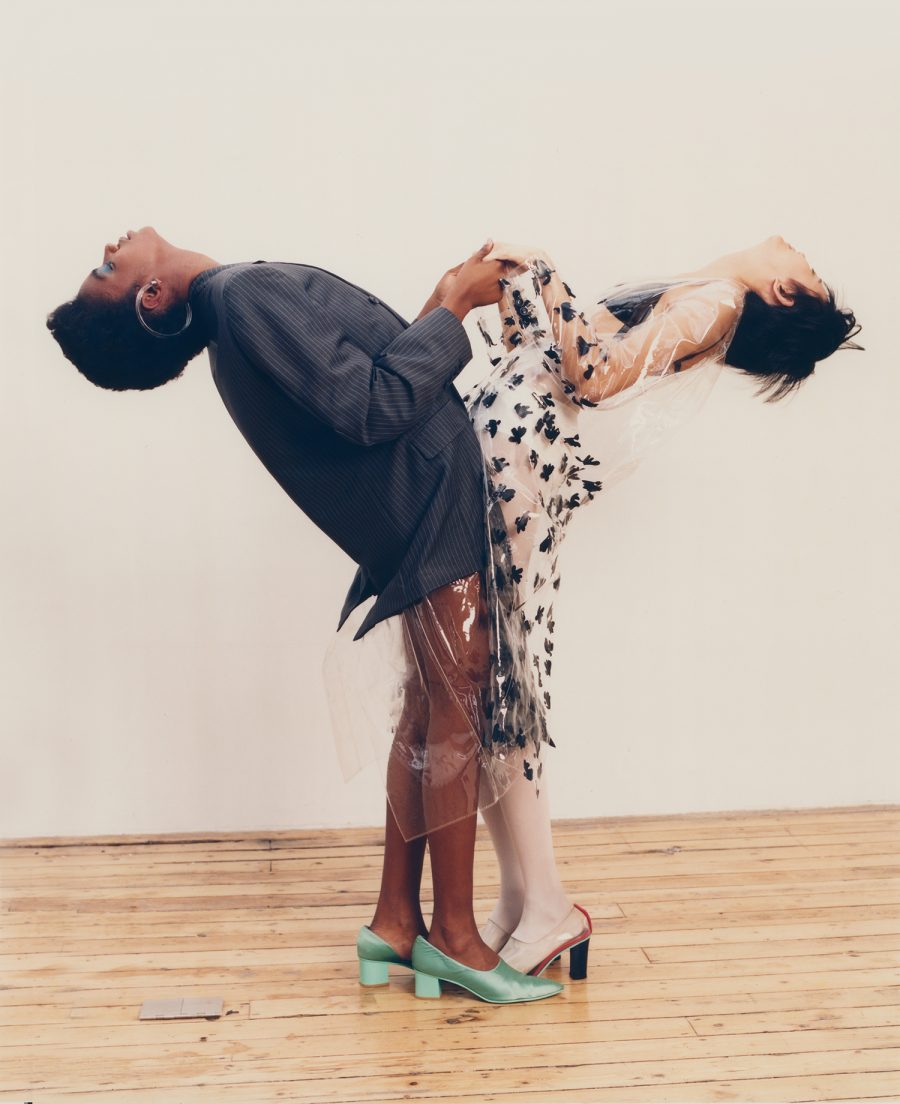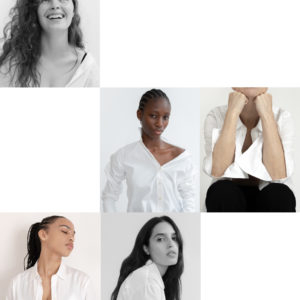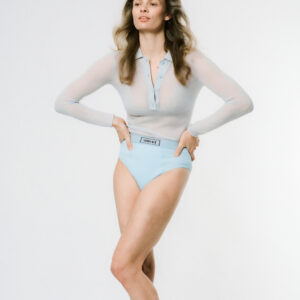Toga / For the Complicated Woman
Feature 18.05.18
Photography Ulrike Rindermann Styling Siobhan Witter Words Simone Konu and Siobhan Witter
Yasuko Furuta is the formidable force behind Japanese cult brand TOGA. Designing for what she calls a ‘complicated woman’, her clothes aim to dismantle borders and preconceived ideas of womanhood. Taking a different approach to the fashion system, TOGA is a brand which has grown its organic following due to its authenticity to individual expression. We catch up to discuss clothing and memory, Borderless fashion, and how the east and west have shaped this designer.

All clothing, shoes and accessories by TOGA PULLA and TOGA
Tell us a bit about your earliest memory connected to clothing?
Ever since I was small, my mother let me choose what I wanted to wear.
I remember I chose a tweed three-piece suit for my grade school entrance ceremony and when I was commended for having exceptional taste, I felt proud and thought I might have talent. I started to think I wanted to be a designer.
I studied pattern making and fashion design at ESMOD Japan and then I moved to ESMOD Paris.
After graduating from ESMOD Paris in 1994, I came back to Japan and worked as a part-time employee at COMME des GARCONS. Then I started to work as a costume designer, producing one-of-a-kind pieces. I always designed with the intent to immediately impact viewers. The more I did that kind of work – my desire to have an impact on a wider market, and to take complex and contemporary ideas to a larger number of people through global sales, became stronger. I remember a point when I thought having my own label could be an actual career for me.


Do you have a favourite item of clothing?
There is not particular item I like, but I like encountering something that’s exhilarating in the way that’s similar to something taboo. It can be an event that changes your perspective. I normally find these in vintage stores. It can be one-of-a-kind products of immense labor and time. And that’s exciting.

How would you describe the TOGA Woman?
I like a woman who is complicated and has many different facets and sides to her, existing in this chaos.


You are known for combining fabrics and textures in really unusual ways, there is always something present to surprise and challenge you in the TOGA collections…
I spend a lot of time imagining how I might connect various strands of concepts and inspirations. I’m usually not thinking about one specific thing to create.
I like to have a well thought out concept. The constant mix of different trajectories, and the presence of gaps and mysteries is similar to the complexity of humans.
That which remains mysterious is sexy.
These are the reasons our pieces constantly juxtapose contrasting materials, for example combining transparent items with a coat that hides the wearer’s body.



For Spring Summer 18 tailoring is key to your collection, showcasing with masculine suiting and feminine silhouettes. Are there any particular era’s in fashion that your are influenced by?
I wanted to create a worldview of increasing borderless-ness in various fronts, not just in terms of gender. A man wearing a skirt doesn’t mean gender has been eradicated, but I think being able to wear what one wants is a sign of a healthy society.
I think it’s important that individuals have the freedom to choose from options without worrying about how he or she will be seen by others. For that reason, I used the motif of the business suit, which I think is a quintessential symbol of constraint.



You show your collection in London, but originally you are from Gifu, Japan, and studied in Paris – how do you think these different locations influence your work? Where is your favourite place to be?
There is western expression of sexiness through revealing, the Eastern expression of the same through concealing. The beauty of Western architecture and gardens’ perfect symmetry; versus Eastern aesthetics of wabi-sabi and asymmetry.
If I had only lived in Japan, I would not have experienced the different aesthetics sensibilities of the East and West.
I do always hope that fashion will be a place that accepts a variety of cultures.

Would you describe yourself as a feminist designer?
I have been feminist for a long time. Since I started this company, I have been trying to make this an environment in which women can freely express their opinions.



You have a huge following. What do you think contributes to TOGA’s success?
I think it’s about sensibility. Brands now have to provide not only clothes, but gossip-worthy sensation. Something scandalous. Some brands excel at creating buzz. It might be the clothes themselves, someone who wore the clothes, or the promotional images that are sensational. We’ve never gone out of our way to ask anyone to wear our clothes. People have been naturally drawn to our clothes and asked us to wear them. Mysteriously enough, the people who request our clothes tend to be people that I like and are interested in. How can that be explained other than our brand sensibility and values?


How do you want to keep evolving the TOGA Woman?
I am grateful that there are people who share the TOGA world beyond borders and cultures.
Through clothes, I hope that people in the world will be more supportive of their own self-confidence.

All clothing, shoes and accessories by TOGA PULLA and TOGA


